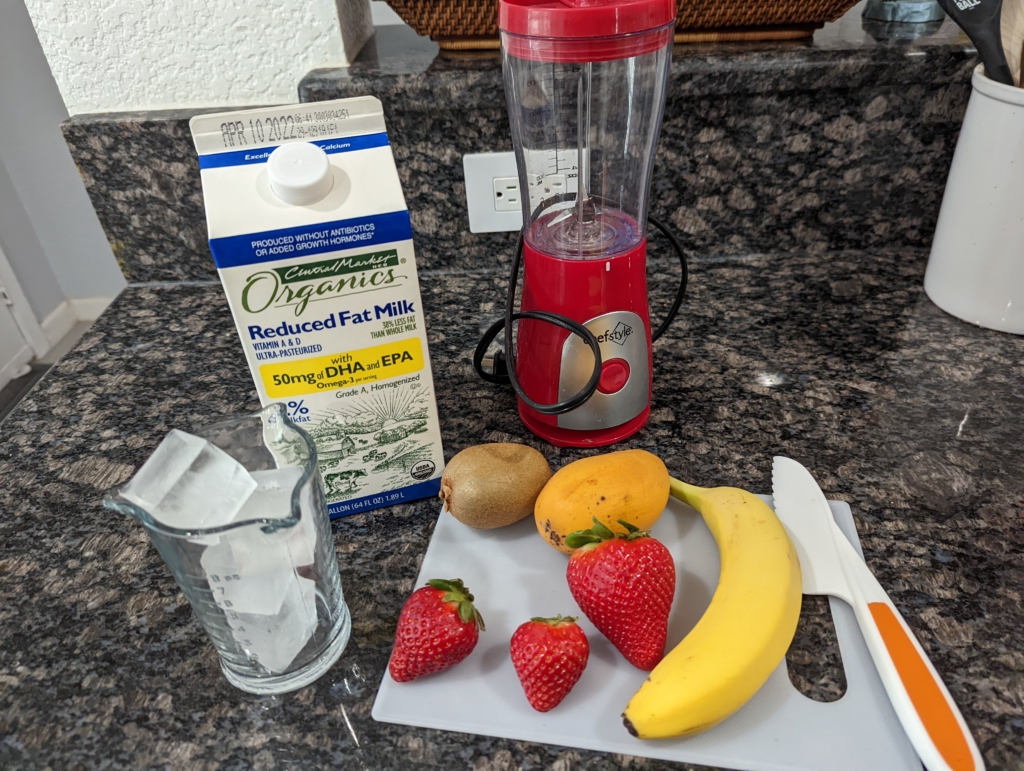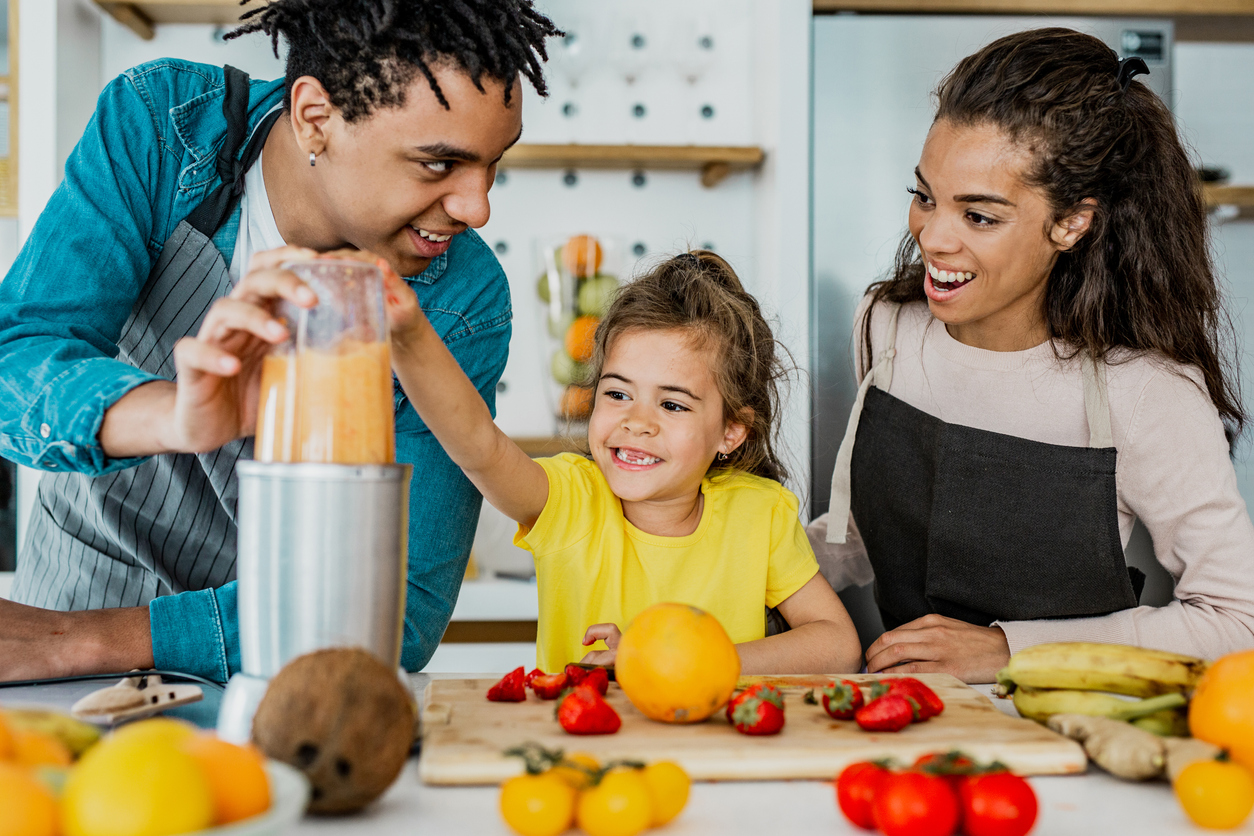Woo-hoo! It’s time for another Read with me Recipe—special recipes for kids that help them practice reading and spelling while making fun dishes together with their grownups. This recipe is sweet, it’s fresh, and it will help kids explore the different ways letters can make the double O sound (as in cool). Because today we’re making cool fruit smoothies!
Long vowel sounds can be a little tricky for children because they correspond to so many different letter combinations, and the long double O spelling pattern is extra tricky, because kids have to distinguish it from the single O sounds (as in hot and float). But if that sounds complicated, don’t stress! Kids learn these patterns little by little, and a bit of practice goes a long way. Make this recipe together and your child will be on the road to reading OO like a pro.
Before you start to make your fruit smoothie, demonstrate the OO sound in smoothie to your child and practice making it together. Have some fun! You can point out that it’s the same sound in “Oooh! That’s yummy!” Anything that helps them remember will add to the learning. Then explain that the sound can be made by the letters OO next to each other. I suggest handing them a pencil and encouraging them to try circling the OO patterns in the recipe. (For additional practice, check out our post “Teach Kids to Read OO Words.”)
For beginners, just focus on the OO pattern, but with children who are farther along their reading and spelling journey, help them circle all the long double OO sounds they find in reading the recipe. This will include these other “vowel teams,” too:
UI (as in fruit)
EW at the end of a word (as in few and new)
Read with Me Recipes
Our Read with Me Recipe series features printable recipes that are super easy to make and read with kids. They use simple words and short sentences typed in an easy font to set your little one up for reading success. Just print out the recipe and then read it with your child as you cook together. (Scroll down for tips on using it to help teach reading.) The idea is to make it easy for you to mix reading and writing into everyday life with your kids. This kind of “everyday literacy” is key to raising thriving readers.
What do you love to cook with your kids? Submit your favorite recipe. Or request a recipe you’d love to read (and make) with your kids! We’ll add them to our upcoming Read with Me Recipes.
Cool Fruit Smoothie
- 2 cups of fruit
- ⅔ cup of milk
- Ice
- Blender
- Safe knife
Note: If the fruit is frozen, you don’t need ice.

Step 1
Add a few ice cubes to the blender.
Step 2
Peel and cut the fruit. Try fruit you love and fruit that is new.
Step 3
Add the fruit to the blender.
Step 4
Add the milk too.
Step 5
Put the lid on the blender and blend until smooth.
Step 6
Enjoy your food!

Tips for teaching kids to read with recipes:
- Introduce your child to how recipes work. If you’re not sure they know them already, be sure to explain vocabulary like “ingredients” and other cooking terms. (Even though we won’t be reading such complicated words in this recipe, they’re important words to learn.) One of the biggest challenges for beginning readers—and most important oral language underpinnings of literacy—is just knowing and understanding all the words they’ll encounter in print.
- Watch out for specific words in the recipe they may not be familiar with, and give a simple definition.
- Keep an eye out for tricky-to-read words, such as “ice,” “knife,” and “fruit.”
- For little ones who aren’t reading much yet, just pointing out what you’re reading and emphasizing a few key words or letters is enough. If you make the recipe again, you can help them find the words you pointed out before.
- Use this as an opportunity to show them punctuation, as well as words and letters. Point to the commas, periods, or other punctuation marks, and explain what they mean.
- If they can’t read the recipe on their own, give them chances for success by asking them about what they do know, gently underscoring key knowledge. E.g., ask, Can you find a letter O? or How many Os do you see in this word?
- For kids who are reading already, encourage them to read the recipe themselves. If they have trouble, just calmly help them with any words they can’t quite get. E.g., if they have trouble with the word “blender,” try covering “er” and helping them read just the first part of the word before you uncover the rest.
- Bring your patience. Give your child space to read a word (or identify a letter) before you jump in, but be prepared to help if they’re showing signs of frustration.
Submit your and your child’s favorite recipe to hello@mayasmart.com to get it featured in our Read with Me Recipe series.

